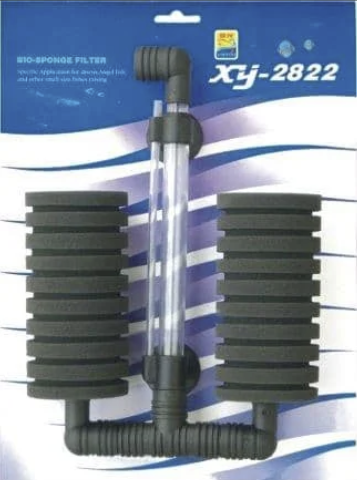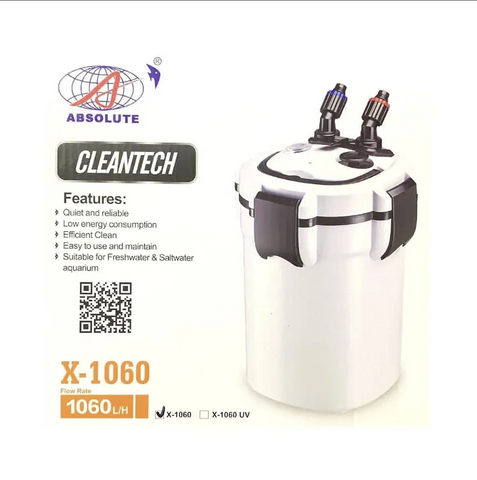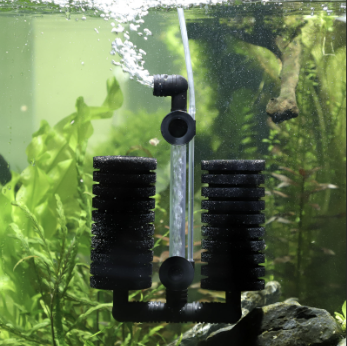Hey yo! Welcome back to simple fish breeding. In this article, I will talk about aquarium filters and specifically about everything you need to know about how to set up filters for fish tanks.
Compare all the different filter types and I will try to help you understand what you need for your aquarium, sit back and read this article.
Filters used for your aquarium in the first place I want to discuss why we have filters in aquariums.
Nowadays a lot of beginners believe that the reason we have filters is to filter out particulate matter present in the water while filters do this.
The main reason you should have a filter is to create a surface area for bacteria to help break down everything in your aquarium very quickly.
It is important for you to understand that your aquarium is an ecosystem and what is included is a Nitrogen Cycle.
What our filters do is create homes for all those bacteria to live in and help that cycle in our aquariums so that when we flush the waste out.
That's why you need a filter. Yes, it helps to keep the water clean but that's not the only reason you can keep the water really clear in the tank.
I'll start with the Sponge Filter as they are my absolute favorite.
Sponge Filter.
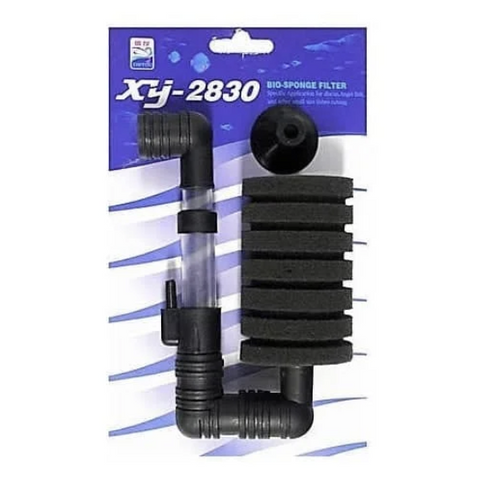
The way a sponge filter works is to use air and lifting tubes to pull water through a lift tube and through a filter membrane, so outside of the filter, that big circular sponge is your filter media.
And then the air that gets pumped inside that sponge filter goes through that outlet, pulling water through that sponge, that's how it filters.
Filters that usually have a sponge filter wall plug actually only require one wall plug to run multiple filters, which also means it doesn't use a lot of power.
Another great thing about sponge filters is that they are extremely easy to clean, all you have to do is unplug the sponge filter, put it in a bucket and squeeze out that sponge and put it back in. They are very, very easy to clean
I recommend cleaning them monthly with old aquarium water and it is super easy so if you have about 10 pieces it will take you about 20 minutes to finish all your aquarium cleaning them is super easy.
Another good thing about sponge filters is that they give oxygen to the water because you pump air into them and the air goes to the top of the water and oxidizes some of the water, so that's another good benefit, and they nor 'don't smoke small fish so they are great for fry tanks.
I like to use a sponge filter for very low-tech aquariums or beginner aquariums. They are a great filter for beginners, they are ideal for spawning and commercial tanks in general, they are just a really good choice for beginners.
Twin Sponge Filter.
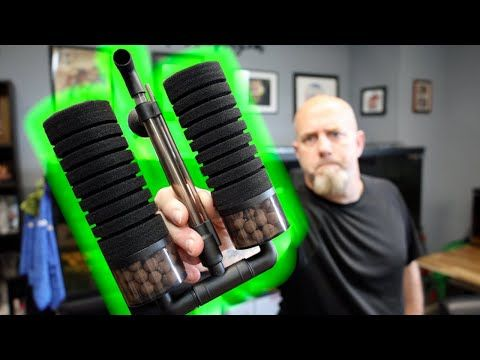
Twin Sponge Filter provides mechanical filtration, biological filtration, oxygenation, and aeration in one for your fish tank, air diffuser chamber produces numerous minutes which promote the gas exchange process and increases dissolved oxygen level in the water, suitable for freshwater and saltwater
High-density porous fine sponge protects baby fish from being sucked into the filter system, double 9-layer ribbing sponges, which provide lots of surface area for the formation and growth of beneficial tiny creatures.
Increase biological filtration, good water flow, also trap floating debris and fine particles, keep your fish tank crystal clear and clean, closer to the natural water quality.
Easy to set up: using an air hose, connect one end to your air pump and the other end to this filter, and filtration equipped with a check valve on the air hose, to prevent water backflow and air pump damage due to power outages, provides and aeration, a great way to clean and oxygenate your tanks.
Easy to clean: simply remove the 2 sponges from the filter to clean or replace them, rinse and squeeze the sponges in used tank water, do not rinse the sponge with tap water or hot water, clean the sponges about every 2 weeks.
Need to replace the sponges every 5 to 6 months maximum.
Hang On Back Filter.
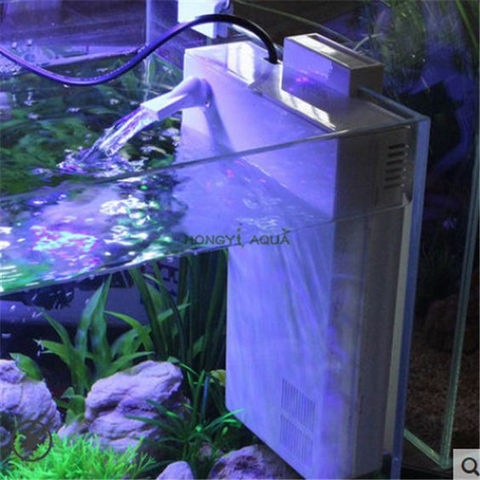
The Hang On Back filter is first and foremost a rear suspension filter that can be visually appealing and they are what you will get in a beginner's kit, so if you buy a tank beginner fish, they usually come with a rear suspension filter.
The way they work is they just pull water up a hose into a hanger at the back of the tank, then the water will go through that compartment and back into the tank, the benefit of these is that they look attractive, sometimes they can be quiet,
This filter is really good for nano tanks because you can easily set it up on the back of the aquarium, plug it in and let them do the work for you.
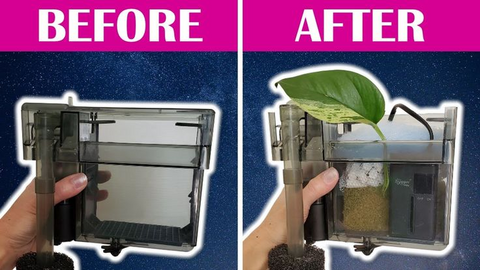
Canister filter.
Canister filters can be good for certain types of tank fish, a lot of these plug-in filters are really good for the aquarium and increase the aesthetics.
Water is pumped from the aquarium into the box, it passes through a series of membranes and then back into the tank.
The good thing about Canister filters is that they usually have a large filtration capacity, they are really good for large tanks, and they look sleek because only one pipe sticks to the tank.
And now, you will need a few things to set up your tank filter. Note, run the filter in a tank with no fish for 1-2 days BEFORE ADD FISH IN.
Step 1:
- Fish tank filter
- Filter media (something that goes inside the filter to catch dirt and bad luck)
- Air pump and air duct (if your filter needs air to work)
- Power outlet (to plug in your filter)
Step 2: Choose a Good Location.
Find a nice spot for your aquarium where it's not too hot or gets too much sun.
Make sure it's near a power outlet so you can plug the filter in.
Step 3: Put the filter in the tank.
Carefully set up the filter inside the aquarium. Some filters hang on the back and others are on the bottom.
Follow the instructions that came with your filter to do this properly. The manual is always clearly explained in each filter that comes with it.
Step 4: Add filter media.
Open the filter and place a special sponge, piece of ceramic, or ball that helps trap dirt and bacteria.
Water passes through these filters and it is purified as it passes.
Step 5: Connect the Air Pump (if needed).
If your filter uses an air pump, connect it to the filter using an air hose.
The air pump creates bubbles in the water, which cleans the water even more.
Step 6: Fill the tank with water.
Add clean water to your aquarium. Don't fill the top with water – leave some space so the water doesn't spill out as your fish swim around.
Step 7: Plug in the filter.
Carefully plug the filter into an electrical outlet. It will start working and cleaning the water.
Step 8: Wait a moment.
Let the filter run for a day or so BEFORE ADDING YOUR FISH.
This makes the water really clean and safe for your fish to live in.
Step 9: Introduce your fish.
Now it's time to add your fish to their clean and happy home! Gently place them in the water.
Make sure you have prepared the right water temperature for them and related parameters.
To know more about which fish is suitable for beginners, read the article:
GOOD COMBO FOR BEGINNER AT AUSTRALIAN ONLINE FISH STORE.
Online Fish Stores In Sydney For Newbies-From Tetra To Cory Catfish.
Step 10: Check and Clean.
Monitor your filters. Every few weeks, you may need to turn it off, take out the dirty filter media, and put in new or cleaned media.
This helps the filter continue to do its job well.
And that's it! You have set up a filter for your aquarium. Your fish will be much happier and healthier with clean water to swim in.
Remember to take good care of your fish by feeding them the right food and checking on them regularly.
Micro Aquatic Shop - Aquarium Fish For Sale Near Me.
Unit 15, 2-8 Daniel Street, Wetherill Park, NSW 2164
Customer support: (02) 8320 3037
Email: support@microaquaticshop.com.au

